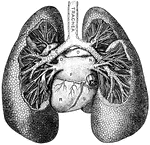Clipart tagged: ‘respiratory’

Blood Circulation
This illustration shows a representation of the circulation of the blood, in its essential features.…

Gills (Crayfish)
This illustration shows the thorax of a crayfish with a portion of the carapace removed to show the…
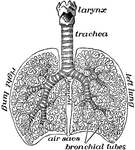
The lungs
"The lungs fill up most of the cavity of the chest. One lies on either side of the heart which is in…

Red Whelk
Fusus antiquus. "...a division of prosobranchiate gastropods, having the lip of the shell notched, canaliculate,…

Back View of Respiratory Apparatus
Outline showing the general form of the larynx, trachea, and bronchi, as seen from behind. Labels: h,…

Front View of Respiratory Apparatus
Outline showing the general form of the larynx, trachea, and bronchi, as seen from front. Labels: h,…

Development of Respiratory Organs
The development of the respiratory organs. A, is the esophagus of a chick on the fourth day of incubation,…
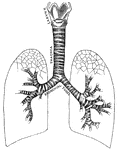
Respiratory system
"Larynx, trachea, and bronchi, showing the manner of division, and the rings of cartilage." —…

Upper Respiratory Tract
Operative approaches through the front of the neck to the larynx, pharynx, and trachea. a: Approach…
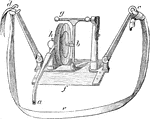
Stethograph or Pneumograph
The stethograph or pneumograph consists of a thick rubber of elliptical shape about three inches long,…
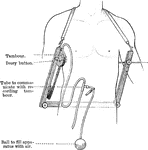
Stethometer
The stethometer consists of a frame formed of two parallel steel bars joined by a third at one end.…

